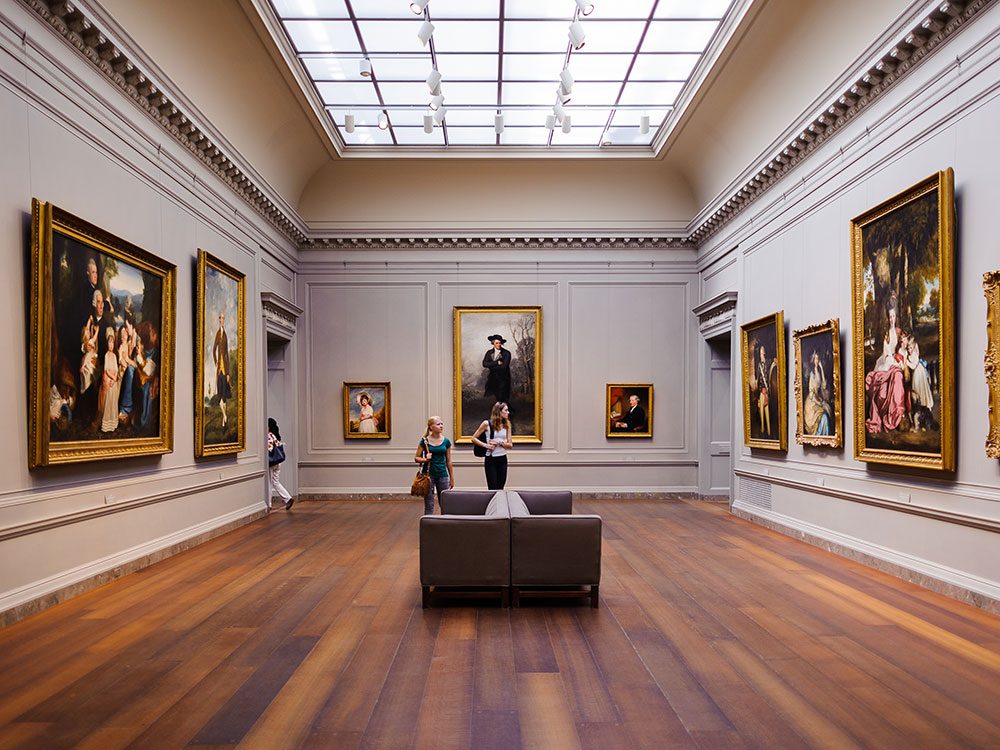
Brush Up on Art History
Collecting original artwork can be daunting, particularly if you don’t already have the art education to know your Monets from your Manets. Doing a bit of art research before you buy could spell the difference between a sound investment and a costly mistake.
Make it a point to visit museums, galleries, art fairs, and online art resources to get a sense of the various art styles and movements—and, most importantly, what types of art speak to you. “We call it ‘training your eye,’” says Elena Soboleva, special projects curator at Artsy, the world’s largest online database for contemporary art. “Even if you can’t afford the pieces or they’re in a museum context, research is very valuable. It will inform you on a scale that you can afford.”

Skip the “Easy” Piece
Fight the urge to splurge on the very first piece of original art that you fall for. “You have to love it, but you have to love it in a complex way,” says Soboleva. Since the artwork will hang in your home for years, likely in a spot where you’ll see it every single day, try to find a piece that is a bit of a challenge for you and that has many layers. “If it’s too simple or has one punch line, you’re going to get sick of it,” Soboleva says.

Build a Theme for Your Home Art Collection
It’s one thing to invest in one piece of original art, but what about adding a second and third canvas to your ever-growing home art collection?
According to Soboleva, it’s important to choose a theme to guide your selection of artwork. “A theme gives a collection some focus,” she says. “You want to end up with a collection of pieces that contextualize each other and create a greater narrative than the pieces by themselves.” The theme could be based on the historical period the artwork was created, the style of the pieces, or the subjects depicted. “You don’t have to be too rigid,” Soboleva says. “It can be more of an underlying theme.”

Invest in Art that You Like
You might think it goes without saying, but if you’re purchasing art to display in your home, it’s important to invest in pieces that you actually like. As Soboleva says, “You’re buying it for life,” so decisions should be based on what speaks to you rather than what complements the current colours in your decor.
“Even a humble art collection can be very meaningful,” says Soboleva. “It’s one of the few things you can pass along to your kids.”
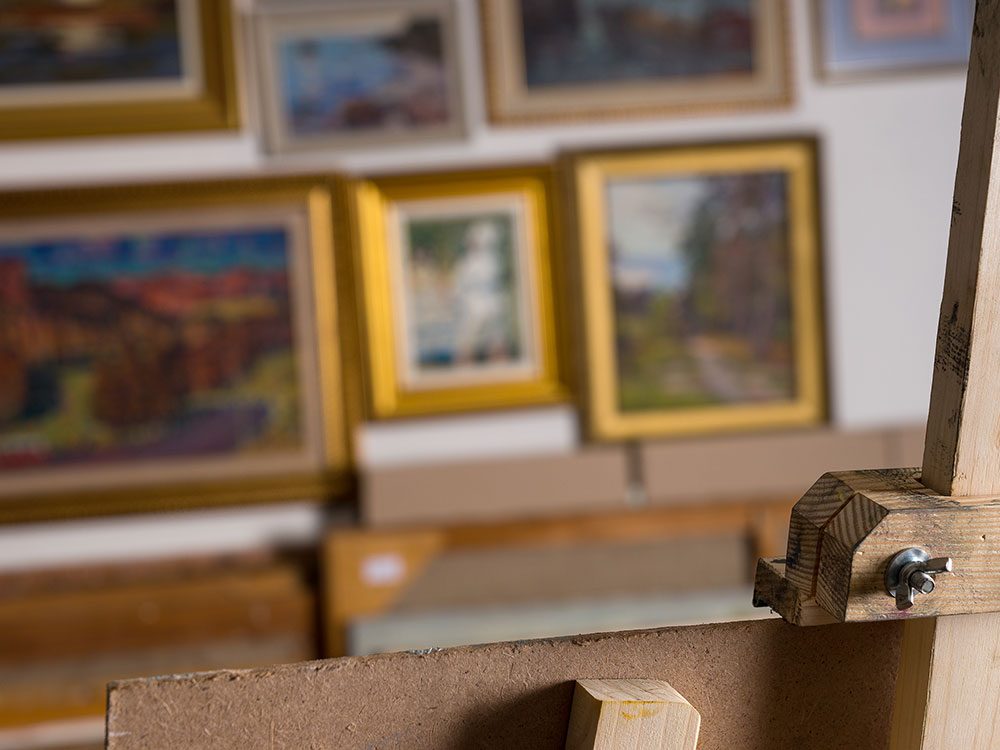
Don’t Be in Too Much of a Hurry to Build Your Home Art Collection
Investing in a home art collection is much less intimidating when you’re content to build the collection over time. Set aside an annual budget for original art, and amass your collection slowly rather than purchasing an entire gallery wall in one fell swoop. “You’ll get better value in the long run and more opportunities to actually snag significant pieces,” says Soboleva.

Don’t Be Overly Concerned About Resale Value
When investing money into a home art collection, it’s natural to think about whether or not the pieces will appreciate over time. According to Soboleva, however, that’s likely not worth losing sleep over—unless you’re a particularly high-roller, that is. Any piece of art under $10,000 isn’t likely to spell a financial windfall for you—or your heirs. “At that level, there are a lot of artists, and it’s not clear who is going to succeed,” she says. “Again, that’s why you should buy something you love and are going to enjoy.”
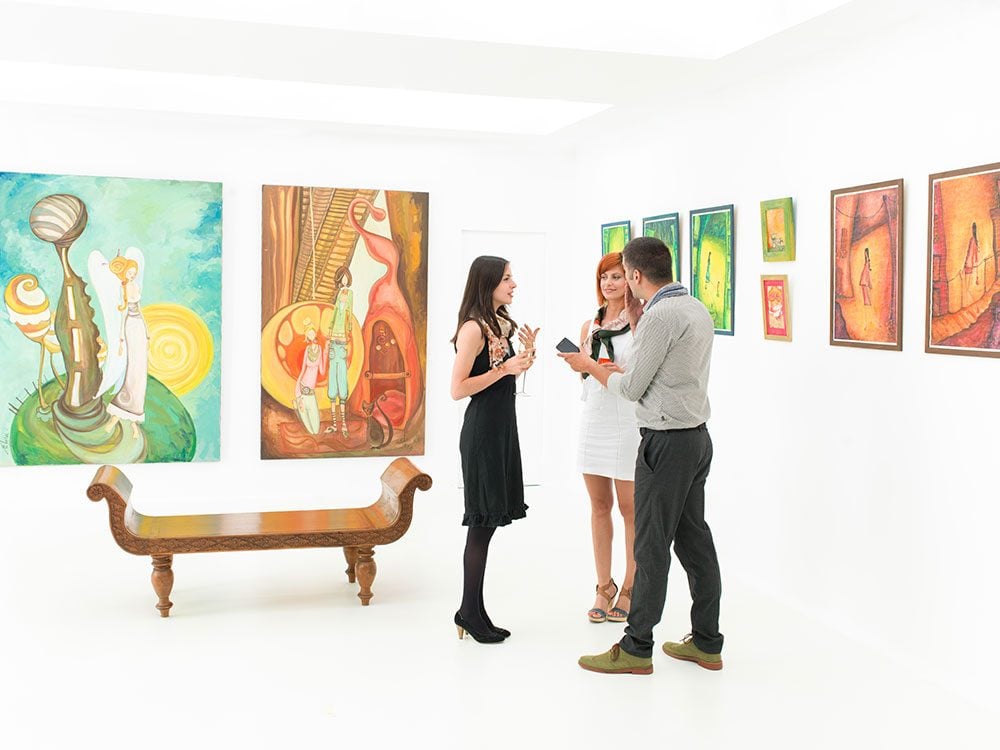
Build Relationships With Gallerists
Never feel embarrassed to walk into a gallery on account of your budget. “There’s nothing wrong with saying, ‘I have a very small budget and I’ve never bought art before, but this really excites me and I want to start,’” says Soboleva. “Even the top New York gallerists will pay attention, because they see a person who has the potential to fall in love and become a greater collector. Over 25 years, that collector may amass something very special. And it’s the dedication that they appreciate.”
Developing a relationship with owners and employees of art galleries that you like (something you’ll only discover after you’ve visited several spaces) can give you access to art shows, openings and special events. The contacts you make here can provide insight on the artists being shown and help you choose pieces for your home art collection. In some instances, the gallerist might even work out financing options for you.
Check out our roundup of 10 Canadian Artisans Worth Watching!
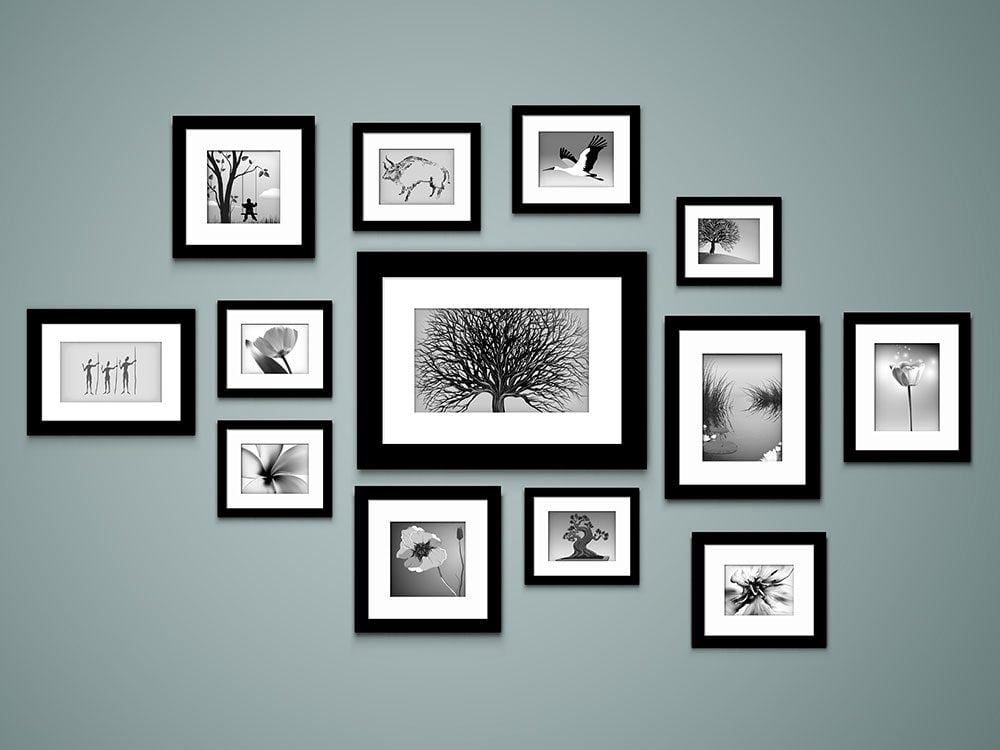
Consider Buying Editions Instead of Original Artwork
An “edition” is an authorized print of a piece of art that’s produced in limited quantities. It allows a buyer to purchase artwork for a fraction of the cost of the original; in effect, making the works of popular artists more accessible to the average Canadian. Keep in mind, the larger the print run, the more affordable the print will be in relation to the price of the original.
“Of course, it’s a trade-off,” says Soboleva. “Would you rather get a large painting by an unknown artist or a well-known artist’s edition from a large run?”
For a great selection of editions, Soboleva recommends checking out Caviar 20 in Toronto and The Print Atelier in Montreal. If your budget is very tight, try an affordable art subscription such as Papirmass, which delivers small, non-numbered prints from emerging artists to your door every month.
Check out some of the year’s best original Canadian photography!
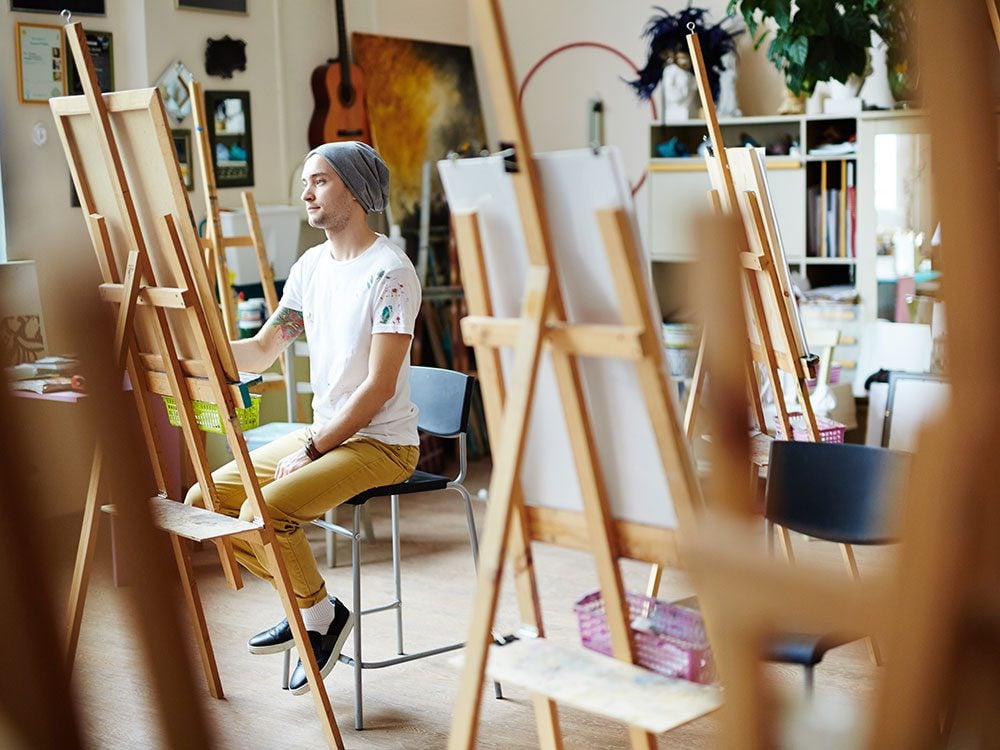
Consider Buying Student Artwork
Photo: ShutterStock
Buying artwork from student shows at colleges and universities is often a win-win situation: Not only are you usually getting an amazing deal on original art; you’re also supporting up-and-coming Canadian artists. Still, Soboleva warns against making choices based on appreciation over time. “I wouldn’t advise people to buy work just because they think someone is going to get famous,” she says. “You have to buy because you’re enjoying the process and view the purchase as something meaningful.”

Build Your Home Art Collection with the Works of Canadian Artists
One of the best ways to ensure that Canadian artists will continue to produce great art is to support them by attending their shows and buying their work. Soboleva has a long list of artists that she loves, but she finds Chloe Wise, Jon Rafman and Elaine Cameron Weir particularly inspiring. Even if you can’t afford their pieces, their websites provide a fascinating glimpse into what’s new and exciting in Canadian art.

Protect Your Investment
Brett Walther
It’s important to consider light conditions and framing options when displaying your home art collection. “If it’s a photograph, ask the gallerist if it’s behind anti-UV museum glass,” says Soboleva. “If it’s a painting, don’t put it in direct sunlight—even the best paint will be affected by sun.” Changes in humidity can also damage art, so you may even want to monitor the humidity levels in your home and use a dehumidifier to combat moisture.
As a final precaution, Soboleva recommends snapping high-resolution photos of all of your original artwork and storing them in a safe place for insurance purposes.